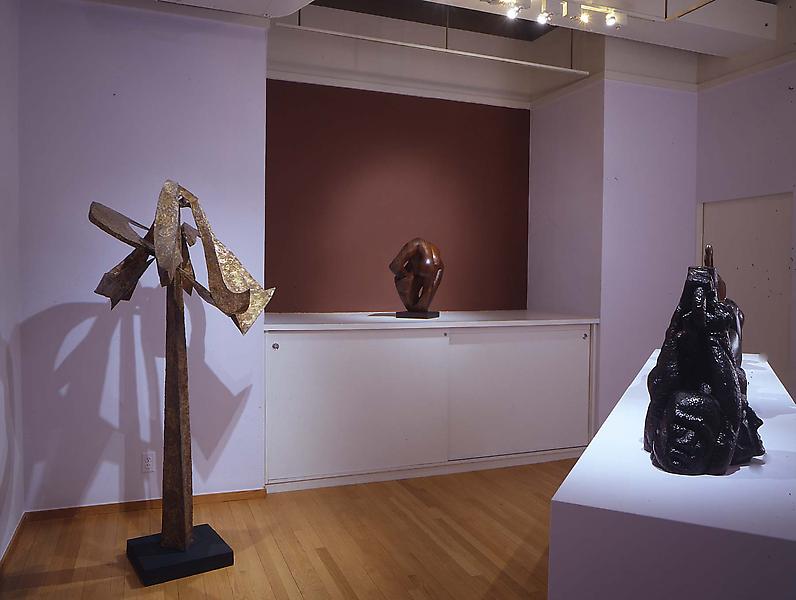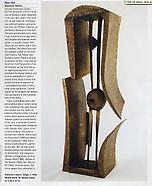Throughout his prolific fifty-year career, sculptor Seymour Lipton (American, 1903-1986) devoted his art to exploring the depths of human existence and experience. From his early use of wood to his later preference for metal, Lipton represented the social upheaval that marked the decades surrounding the Great Depression and World War II. By adding to, eliminating and/or otherwise altering the figure of a once-identifiable object, Lipton transformed his original model into an expression of the common anguish and uncertainty of his time. Whether depicting the tragic horrors of World War II, articulating a fear of the rising power of technology, or empathizing with the condition of the average laborer, this self-taught artist produced works that were firmly rooted in their historical moment. Seymour Lipton: Abstract Expressionist Sculptor, the artist’s first solo exhibition at Michael Rosenfeld Gallery, is a survey of work from 1936 to 1986. Included in the exhibition are twenty-three sculptures, numerous study drawings and maquettes.
Born in New York City, Seymour Lipton grew up in a Bronx tenement at a time when much of that borough was still farmland. These rural surroundings enabled Lipton to explore the botanical forms and animals that would later become sources for his adult work. Lipton’s interest in the dialogue between artistic creation and natural phenomena was first nurtured by a supportive family and further cultivated through numerous visits to New York’s Museum of Natural History. In 1927, Lipton received a degree in dentistry from Columbia University that not only provided him with a lucrative career but also gave him a foundation for working with metal. His interest in sculpture came to fruition in the late 1920s, when he began to create clay portraits of family members and friends.
In the early 1930s, despite a strong commitment to his profession, Lipton began to devote an increasing amount of time to his art. Although he considered fellow artists William Baziotes, Adolph Gottlieb, Richard Pousette-Dart and Will Barnet friends, Lipton’s reserved personality inhibited an active social life, and his reluctance to participate in social happenings with his contemporaries often led to alienation. The technique he developed of carving directly into wood afforded him a richly emotional visual vocabulary with which to articulate the desperation of the downtrodden and the unwavering strength and spirituality of the disenfranchised. In 1940, Lipton began teaching sculpture at the New School for Social Research, a position he held until 1965. Also at this time, he deviated from wood and started working with brass, lead and bronze. Choosing these metals for a visual simplicity that he believed exemplified the universal heroism of the “everyman,” Lipton could also now explore various forms of abstraction. Lipton’s shift towards increasing abstraction in the 1940s allowed him to fully develop his metaphorical style.













